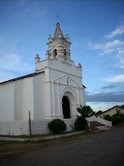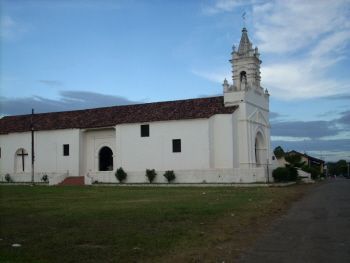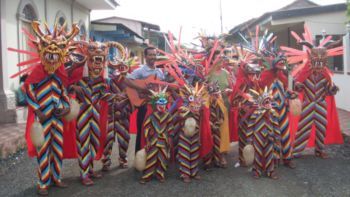Tourism in Parita

Parita, the oldest settlement in the Azuero Peninsula, celebrated its 450th birthday August 18, 2008. Its rich history, not to mention its friendly, fun-loving residents, make it an attractive destination for the growing number of visitors to the region. Moreover, it’s located on the Carretera Nacional, only 15 minutes north of the city of Chitré, where a number of quality lodging and dining options can be found. This charming, tranquil village was founded in 1558, and it’s one of the only towns in the interior of Panama with a traditional Spanish style central plaza. Parita is a trip back in time for anyone desiring a glimpse of what Panama looked like in centuries past. In 1926, Parita’s plaza, the surrounding houses, and the church, Iglesia Santo Domingo de Guzman, were declared national historical monuments by the Instituto Nacional de Cultura (INAC) and it seems little has changed since then. Houses maintain their typical colonial architecture, with red clay tile roofs that help keep Pariteños cool and are far more pleasing to the eye than zinc.
During the town’s patron saint celebrations in the first week of August, cattle roping demonstrations are held in the plaza, filling the arcades of the surrounding homes with spectators.
The remarkable church, named for patron saint Domingo de Guzman, was completed in 1723. It is the only church in Panama with its steeple located directly over its entrance rather than one of the corners. This is unusual because bell towers are extremely heavy and therefore are generally built on pillars that rest upon a massive foundation. While otherwise appearing quite simple, its interior has an elaborately carved pulpit plus a number of lavish baroque altars dating from the 17th century.
Parita is a town that likes to party and none is bigger than the carnival celebrations held in February in the days leading up to Lent. While festivities in nearby Chitré and Las Tablas attract more visitors, Parita’s spacious plaza makes it an appealing choice for those seeking a slightly more laid back atmosphere. But make no mistake, it’s still a serious party, just without the surging crowds and pickpockets.
One of Parita’s most culturally unique celebrations is its Corpus Cristi festival in May. Readers may recognize it from the elaborate and colorful devil masks one often finds for sale in Panama’s artisan shops. Dancers don these masks and brilliant costumes while depicting the biblical story of the battle between the devil and Archangel Michael.
Dario Lopez, one of the nation’s top mask makers, has been producing his extraordinary creations in Parita since the 1970s. You can pay him a visit at his home and workshop on the Carretera Nacional, about 100 meters north of the Shell gas station on the opposite side of the street.
Just outside of Parita, the Parque Nacional de Sarigua is a testament to the unfortunate methods of slash-and-burn agriculture practiced throughout the Azuero during the past 100 years. Deforested to create grazing land for cattle, the thin tropical soil was soon washed away, leaving an almost lunar landscape
The rocky, wind-swept sands and deeply eroded gullies form an arid environment that is a stark contrast to the lush greenery found in other parts of the country. An ANAM ranger station provides information on the effects of deforestation and sweeping views of the bare landscape. The entrance is on the left side of the Carretera Nacional as one is leaving Parita headed south towards Chitré.
The Azuero Peninsula is the birthplace of many of Panama’s most famous traditions, but it’s often overlooked by tourists and residents alike. It’s an easy addition to any travel agenda and Parita should surely not be missed!
Calendar of Events in Parita:
- Carnival: Feb. 20-24 (2009 dates)
- Semana Santa: mid-March
- Corpus Cristi: mid-June
- Patron Saint Celebrations: Aug. 3-8
- Independence Day Celebrations: Nov. 4
 |
 |


